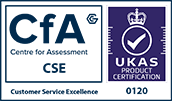Questions about Turnitin
What is Turnitin?
Turnitin is a tool that:
- helps your lecturers by indicating parts in your assignments that use very similar words to other documents in their database.
- generates a report based on the percentage of similarities between your assignment and other works in the database. This is called the Originality Report.
- will allow you to see the Originality Reports depending how your lecturer set up the assignment.
More information about the service
How do I access Turnitin?
Access to Turnitin is solely through Canvas. Your module leader will determine which assignments should have Turnitin links.
Can I see the Turnitin report on my piece of work?
The University's guideline is that you should generally be allowed to see a report on one draft before your final submission. The module co-ordinator will have created the correct settings for Turnitin when they set up the assignment submission link in Canvas. Look in your handbook or ask the module co-ordinator to find out how to submit the draft and see the report.
I got a high number in a Turnitin report. What does that mean?
Turnitin is not a plagiarism detector. It is a tool that helps your lecturers by showing parts of your assignments that use very similar words to other documents in their database. Your lecturer will look at the report and use their judgment to see if the number reflects a real problem with how you have done the assignment. For example, they will ignore groups of words that very commonly appear together (like "University of Bradford Faculty of Social Sciences"). Also, they look to see if you have pointed out that you are using somebody else's work. It is acceptable to have a section in your assignment that is a quote from a website, a book or a source of any kind, providing that you reference it so that the lecturer knows it is a quote.
What percentage of similarity should I get in a Turnitin report?
There is no set number that you have to aim for. A main reason for that is that different kinds of assignments work differently. For example, in a literature review, you are supposed to read and quote from a lot of different sources, but in a lab report, it is expected to be all about work you did yourself. You would expect to see a higher amount of similarities in the literature review than in the lab report.
Rather than worrying about percentages, it is more important to make sure that you are citing and referencing correctly, so that all the similarities are ones that you have pointed out as references. If you want to know more about Turnitin reports, ask the person who set the assignment (usually the module co-ordinator).


